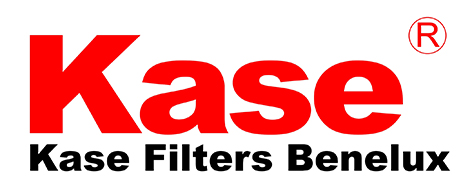The Kase Revolution magnetic ND100000 filter is an ND filter that offers an exposure reduction of 16.5 stops. This filter is usually used for solar photography.
Thanks to the included Kase magnetic lens adapter ring, the filter can be used on a lens with a 112mm filter thread on the front.
The neutral density of the filter darkens the entire image without affecting the coloration of the image.
The multi-coating ensures accurate colors and sharp results during long exposure times and prevents ghosting and flare. The lightweight and thin aluminum frame prevents vignetting and the easily recognizable orange serrated edge provides a secure grip for easy installation and removal.
Characteristics
- Made of kase Wolverine glass
- Shock-resistant almost indestructible glass
- Easy and quick to assemble and disassemble
- Color neutral
- Mostly used for solar photography
- Oil, dirt and water-repellent coating
- Mold resistant coating
- 16.5 stops of light reduction
- No vignetting thanks to the thin ring
- Orange colored edge
In the box
- Kase Revolution magnetic ND100000 gray filter 112mm
- Kase magnetic adapter ring 112mm
Solar eclipses are a rare phenomenon; a total solar eclipse even more so. Unless you are lucky enough to live on the path of totality, you will need to travel to a suitable viewing location. Given their predictable nature, several websites and apps can help you find and map the path of solar eclipses, such as TimeAndDate, NASA, and Wikipedia.
Upcoming total solar eclipses
April 8, 2024
An April eclipse, the path of totality for this one will run across North America, from northern Mexico, through Texas and the US Midwest, ending in eastern Canada. Weather permitting, many major cities will see totality, including Dallas, Montreal, Cleveland and Austin.
August 12, 2026
Europe will then be treated to a total solar eclipse in 2026, which will be visible from Greenland, Iceland and Spain. Weather permitting, several major cities will see the totality, including Reykjavik, Bilbao, Zaragoza and Palma. Most of Western Europe will experience a partial solar eclipse.
August 2, 2027
The path of totality for this 2027 eclipse passes through North Africa and the Middle East before ending over the Indian Ocean. Egypt will experience the longest period of totality, lasting up to 6 minutes and 22 seconds near the city of Luxor, making this the second-longest solar eclipse of the century. Given the climate, time of day and exceptional length of totality, this is probably the most favorable viewing position for any solar eclipse in this decade.
July 22, 2028
The last total solar eclipse of the decade will occur in 2028, when Australia and New Zealand will witness an eclipse with a maximum total duration of more than 5 minutes. This eclipse will be notable because it will pass over Sydney.
If you plan to photograph a solar eclipse, whether it is a complete solar eclipse or a partial solar eclipse, preparation and safety are of the utmost importance.
The first thing you need to be aware of is that there are dangers associated with seeing a solar eclipse.
Never look directly at the sun with your naked eye, especially through your best telescope or binoculars. At best you burn your retina; at worst, you can become instantly and irreversibly blind.
Always wear solar viewing glasses. This also applies to your camera with a telephoto lens, always use a good filter, which significantly reduces the amount of light that gets through. Pointing a telephoto lens at the sun without any form of protection for your belongings is a very bad idea. A telephoto lens increases the intensity of sunlight and in extreme cases can melt your sensor!
